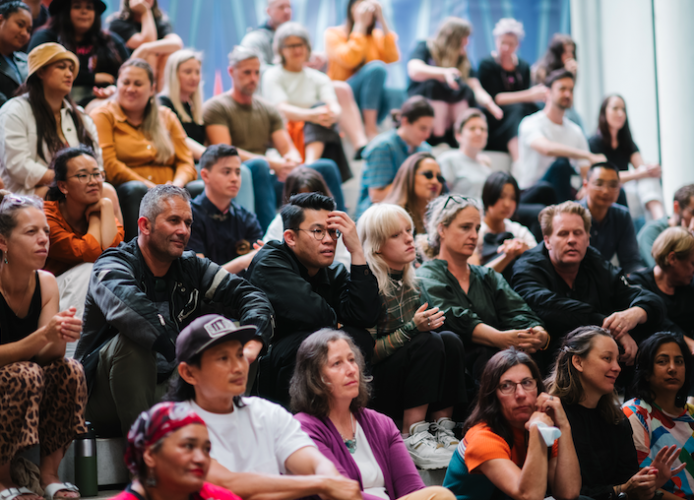- What We Do
- Understanding your audience
- Engaging new audiences
- Designing experiences
- Building loyalty
Audience Atlas Aotearoa (New Zealand)
A major study of New Zealanders’ cultural habits and preferences has revealed both significant challenges and huge opportunity for audience and organisational development in New Zealand.
Over the past few weeks, MHM Director Andrew McIntyre has co-hosted a series of webinars with the project sponsor, Creative New Zealand, to provide a deep dive into the findings of this latest research.
You can watch these webinars and access the full, free report, as well as smaller summary sections, here
Further data on individual organisations is also available. Contact nzteam@mhminsight.com to discuss options.
This iteration of Audience Atlas couldn’t come at a more important time for New Zealand’s cultural sector as it adapts to the realities of the pandemic and beyond.
Helen Khoey, Senior Advisor, Audience Development and Capacity Building, Creative New ZealandCommissioned by Creative New Zealand, the 2020 edition of Audience Atlas Aotearoa is the fourth – and largest – of its kind.
The study revealed strong evidence that the arts has a positive impact on personal wellbeing. However, this is not experienced universally – it is those already ‘converted’ that are getting the benefit.
Audience engagement and the pandemic
The latest iteration of the study – undertaken against the backdrop of the global pandemic – found that Covid-19 restrictions had only marginally increased people’s appreciation of the arts, and just amongst those who valued it prior.And, while the pandemic provided arts organisations with the impetus to ‘become digital’, growth in online engagement has been muted, suggesting it is time for the sector to take stock.
Market expectations are changing
Once a dependable source of support within the sector, the latest iteration of the study shows that arts membership and subscription is down 39% on nine years ago. There is potential to turn this around however, but new models of engagement are necessary to keep up with the times.The study reveals a similar need with regard to voluntary support. Expectations of volunteers have shifted over the years – potential volunteers are looking for something different. Change in the sector is needed to activate the estimated $244m in untapped voluntary resource.
Culture Segments to facilitate change

In addition to a detailed picture of demographics across the market, the Audience Atlas Aotearoa uses MHM’s globally recognised Culture Segments as a critical lens for analysis.
Culture Segments is a psychographic segmentation system clustering the market based on deep-seated values towards arts and culture. These values frame a person’s attitudes, lifestyle choices and ultimately, cultural consumption.
Read the full report here.
To discuss a deeper dive of the data for your cultural organisation, contact the MHM team at nzteam@mhminsight.com
And if you’re based outside New Zealand and would like to discuss Audience Atlas or any other ways we can help you, please email us at hello@mhminsight.com
NOTES
Audience Atlas is a unique way of understanding the market for arts and culture, measuring and exploring the current, lapsed and potential markets across more than 40 art forms.The studies have been carried out in dozens of countries and states across the globe.
Audience Atlas Aotearoa was first commissioned by Creative New Zealand in 2011 and repeated in 2014, 2017 and 2020, enabling powerful trend analysis.
The most recent survey was conducted between December 2020 and January 2021.
It asked 6,743 New Zealanders aged 16+ detailed questions about their engagement with different cultural activities.
The Audience Atlas explores the general characteristics and trends of the New Zealand culture market in terms of behaviour and propensity to support the arts, as well as market penetration data for over 600 specific arts organisations across the country.
In addition to a detailed picture of demographics, the market is segmented using Culture Segments, delving into people’s motivations and values for engagement.
Through the study, Creative New Zealand is able to provide its investment clients with an up-to-date, bespoke view on their market: how many people are aware of them, who’s attended, how this compares to results for 2011, and where most opportunity for development lies.
The data is also affordably accessible to wider (non-Creative New Zealand funded) organisations, with a number of leading arts organisations already commissioning bespoke reports to get a whole-market-view for their organisation.
Images:
Te Kura Kaupapa Māori o Hoani Waititi. Photograph David St George. Courtesy of Auckland Art Gallery Toi o Tāmaki.
Photograph David St George, courtesy Auckland Art Gallery Toi o Tāmaki. - Engaging new audiences
- Understanding your audience
